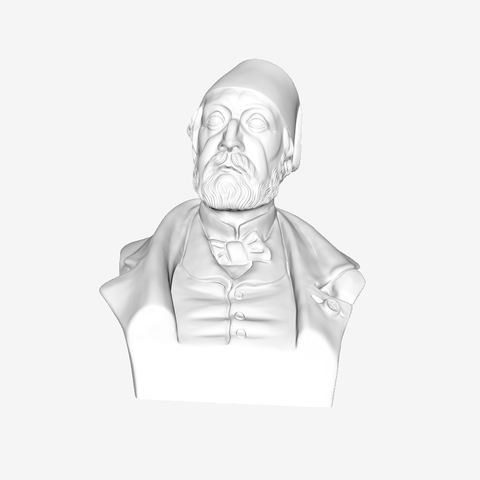
Auguste Mariette at The Louvre, Paris
cults3d
Auguste Mariette, a French archaeologist renowned for his groundbreaking excavations in Egypt, was born on February 11, 1821, in Boulogne, France, and passed away on January 19, 1881, in Cairo, leaving behind an invaluable legacy of discoveries about ancient Egyptian history. In 1849, Mariette joined the Egyptian department of the Louvre Museum, where he played a pivotal role in the acquisition of ancient manuscripts, but his true passion lay in unearthing the secrets of Egypt's past. The following year, he traveled to Egypt with a mission to obtain rare texts, only to discover that his true calling was archaeology, particularly at the site of Ṣaqqārah, where he uncovered the Avenue of the Sphinxes and the Serapeum, a sacred temple housing the tombs of revered bulls. This momentous discovery transformed Ṣaqqārah into a hub for archaeological research, drawing scholars from around the world. Mariette's four-year tenure in Egypt was marked by tireless excavation and dispatching of his findings to the Louvre, where he eventually became curator upon his return to France. The Egyptian government appointed him conservator of monuments in 1858, a position that allowed him to regulate unauthorized excavations and protect Egypt's cultural heritage from looters. In doing so, Mariette secured a virtual monopoly on archaeological investigation and restricted the sale and export of antiquities to preserve them for the nation. His efforts led to the establishment of the Egyptian Museum at Būlāq in 1859, which quickly became the world's premier repository of Egyptian antiquities. Among his numerous discoveries was the magnificent temple of Seti I, an exemplary example of Egyptian architectural prowess. Mariette also extensively studied the pyramid fields of Ṣaqqārah and the burial grounds of Maydūm, Abydos, and Thebes, uncovering the great temples of Dandarah and Edfu, as well as conducting excavations at Karnak, Dayr al-Baḥrī, Tanis, and Jabal Barkal in Sudan. Under his direction, the Sphinx was fully exposed to its rock base, revealing a stunning panorama of life during the Old Kingdom (c. 2575–c. 2130 bc). His written works include Abydos (1869), Aperçu de l’histoire d’Égypte (1874; “Survey of the History of Egypt”), and Les Mastabas de l’Ancien Empire (1889, ed. by Gaston Maspero; “The Mastabas of the Old Kingdom”). Moreover, Mariette contributed to Giuseppe Verdi's opera Aida by suggesting its plot.
With this file you will be able to print Auguste Mariette at The Louvre, Paris with your 3D printer. Click on the button and save the file on your computer to work, edit or customize your design. You can also find more 3D designs for printers on Auguste Mariette at The Louvre, Paris.
